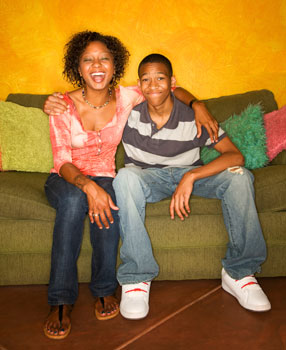A Youth-serving Agency Makes Permanent Connections Its Central Goal
 When Boys & Girls Aid, a 126-year-old youth-serving agency in Portland, OR, put a new strategic plan in place last year, staff and board members took a hard look at how well the organization was fulfilling its core purpose of improving the lives of children in need.
When Boys & Girls Aid, a 126-year-old youth-serving agency in Portland, OR, put a new strategic plan in place last year, staff and board members took a hard look at how well the organization was fulfilling its core purpose of improving the lives of children in need.
Throughout the discussions, they struggled with a question, says Vera Stoulil, director of operations: “How do we help youth who can’t go back to their families live independently?”
They discussed creating more supportive services for youth who’d left their programs, more follow up and aftercare. But the more they tried to answer the question, the more they realized they were missing the point.
“We realized that if youth were leaving our program and needing us to fall back on, then we’d missed something,” Stoulil says. “We need to prepare youth to live independently, but we also need to prepare them to live interdependently. Young people need families and connections in their lives.”
Stoulil says coming to that conclusion made sense for an organization that in addition to working with runaway and homeless youth also serves foster youth and provides adoption services—two areas in which practitioners have long thought of a permanent family or home as the ultimate, if not always attainable, goal for young people.
Today, Boys & Girls Aid aims to establish permanent connections for every child and youth that walks in its doors. In other words, the old question has been replaced with a new one, Stoulil says: “No matter what service we’re providing, how does the concept of permanency fit into that service?”
Disrupted Attachments
It may seem obvious that young people need enduring personal connections if they are going to thrive and become successful adults. But applying the principle of permanency to runaway and homeless youth—particularly those who are 18 or older—requires a shift in thinking about what the term looks like in practice, Stoulil and others at the organization say.
Many youth who enter Boys & Girls Aid’s emergency shelter and transitional living program come from families in which unhealthy relationships are the norm, says Andrea Logan Sanders, who oversees the organization’s shelter and housing programs.
“They’ve had disrupted attachments, parents coming and going, substance abuse, mental illness, instability, unpredictability,” she says.
Spectrum of Permanency
All of that means that many youth are starting at square one when it comes to having healthy connections. So, when a young person enters the transitional living program at Boys & Girls Aid, staff members assess where they are on the “spectrum of permanency,” asking questions about the number of family and friends they regularly interact with, the depth of the connections, the quality of the connections and the young person’s desire to have permanent relationships.
Based on the results of the assessment, staff members identify the youth’s biggest needs when it comes to having strong, permanent relationships and create a plan to address these needs throughout the youth’s time in the program. For some youth, that may lead to returning to live with their families, but many others are better served by simply repairing relationships and staying connected.
“We’re acknowledging that their families may not be the best resource for them, but they can still have a healthy relationship with them,” Logan Sanders says. “Sometimes it’s easier to communicate or learn how to communicate without the pressures of living together.”
The overarching goal for each young person in the runaway and homeless youth programs is to have at least one caring adult they can call if they need help or want to share good news, and for them to also have the lifelong ability to make, and keep, new friends.
Preparing to Connect
Crystal Wilkes, a mental health therapist at Boys & Girls Aid, says the organization’s new focus on permanency gives staff a common language and focus. “Now that there’s a word and a philosophy placed on it, it can inform the therapy,” she says.
Staff of the transitional living program stress the elements of healthy relationships in life skills sessions and their one-on-one interactions with youth. That emphasis, Logan Sanders says, helps the organization move young people closer to meeting the other goals of the transitional living program, like education, employment training and skills building.
“None of those things really stick unless they have a strong sense of self and that doesn’t happen unless they have a strong base of friends,” she says.
Staff at Boys & Girls Aid say that watching youth learn how to make friends, meet people with similar interests, resolve conflicts, and generally improve their relationship skills has solidified the organization’s commitment to permanent connections.
“I haven’t met one client who doesn’t want to have strong connections with other people,” Wilkes says.


 Sign up
Sign up Follow us
Follow us Like us
Like us Sign up for our RSS feeds:
Sign up for our RSS feeds: 

